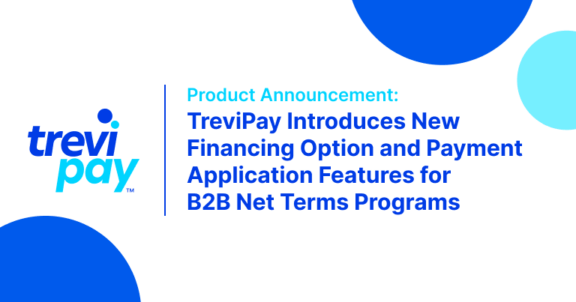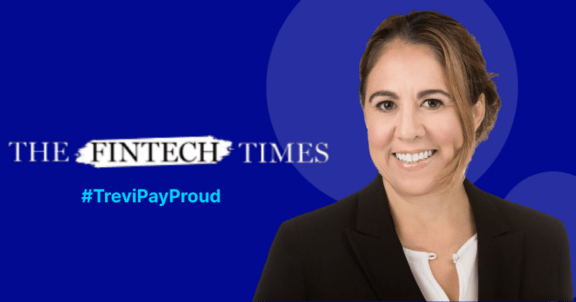News & Insights · Approx. 3 minute read
Solving the B2B eCommerce Checkout Experience

Recently, TreviPay president Brandon Spear sat down with Karen Webster of PYMNTS.com and several members of the B2BecNews research and editorial staff to discuss the current state of the B2B online purchasing experience and how the preferences of B2B buyers are changing. During this webinar, the panel discussed many important topics, the most paramount being how to solve the B2B eCommerce checkout experience.
Lauren Freedman, Senior Consumer Insights Analyst at Digital Commerce 360 kicked the session off by diving into the findings from Digital Commerce 360’s annual B2B Buyer Survey. Freedman discussed many of the interesting data points including:
- 58% of the participants were employees under the age of 50.
- 56% of participants cited company sales under $10M.
- In terms of purchase frequency, 41% said they makes B2B purchases on a weekly basis and 36% said they do over half of their purchases online.
So, what does all this information mean? Purchasing online for B2B is going to continue to slope upwards; 7 out of 10 B2B companies expect their online purchase volume to increase, Freedman noted.
Karen Webster, CEO Market Platform Dynamics and Founder of PYMNTS.com, took over to discuss the current trends, pain points and opportunities that she sees in the B2B payments space. One of the poignant items Webster brought to the forefront was that as payment professionals, we tend to think about payments quite a bit, but often buyers and suppliers don’t think about payments. They think about other things that wrap around the physical act of payments.
And, as Webster pointed out, a lot of the friction in the payments space is made up of frustrations like trying to find the right items to purchase, onboarding and authenticating the buyers and suppliers, the invoicing process, the reconciliation process and tracking payments.
“These things get in the way of creating a seamless buyer and supplier experience,” said Webster. “Knowing where a payment is and knowing that authorized, good funds are on the way is the kind of real-time transparency that is really transformative in the B2B payments space.” When asked about the next big thing in the payments space, Webster said she sees a shift of focus from solely on the buyer to be more inclusive of the supplier. And, any sort of technology that can unlock cash in a way that lets it flow more easily from buyer to supplier.
TreviPay President Brandon Spear wrapped things up by discussing what sellers can do to make the checkout experience less painful for buyers. “We’ve designed our solutions to solve buyers’ problems and to shift the mindset from just selling,” Spear said. Suppliers need to be able to remove friction points and align processes more closely with how buyers want to buy in order to see a better success rate.
“We’ve seen a shift away from brand loyalty to experience loyalty,” Spear pointed out. There are so many points of friction in the account set up process for buyers. If a supplier wants to remove these pain points, it’s best to start by extending terms to facilitate a long-term relationship. But, as Spear mentions, how can a supplier approve buyers for a line of credit quickly and easily?
Often, this process gets held up because it can take days or even weeks to get a line of credit established. If suppliers can take advantage of a solution like TreviPay, they can easily extend terms at checkout, which is how buyers prefer to pay. And, since TreviPay is a completely white-labeled solution, the consistency and experience for buyers is that much more consistent and smoother.
Stay up-to-date with the latest from TreviPay
Thank you for subscribing! You will now receive email updates from TreviPay.



